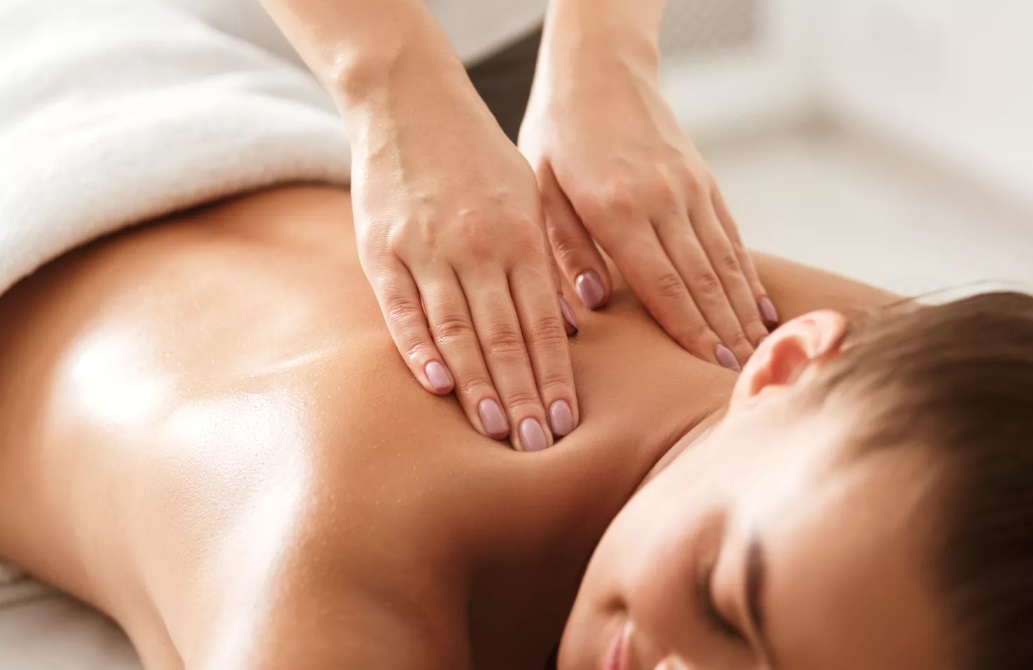By Wendy Wisner – Medically reviewed by Arno Kroner, DAOM
Published on September 11, 2023
:max_bytes(150000):strip_icc():format(webp)/GettyImages-1175433234-034014dc5b9c45edaeaf04c7b80ceafc.jpg)
Swedish massage is one of the most widely practiced massage techniques in the Western world. It’s what many people think of a classic massage, where you lie on a massage table and receive a hands-on, tension-releasing treatment.
Research has shown Swedish massage can lower blood pressure, improve mood disorders, help with pain reduction, and reduce symptoms of general anxiety disorder (GAD).1234
What Is a Swedish Massage?
When you think of a modern-day massage you might receive in the United States, you are likely thinking of a Swedish massage. A Swedish physician named Pehr Henrik is credited with coming up with the techniques and concepts of Swedish massage and introducing it to others.1
The main goal of Swedish massage is to calm the body and mind, and lightly release muscle tension. The massage therapist applies a combination of firm and lighter strokes to the muscles with the goal of relaxing the muscle tissues and increasing blood flow to the heart.1
Swedish massage is often compared to deep tissue massage, but the two are different. Swedish massage uses long, fluid strokes and light-to-firm touch. Deep tissue massage uses firm, deep pressure and the massage therapist often lingers on a particular area of the body, working out knots and tension.1
The two techniques also have different goals: Swedish massage is mainly focused on relaxation whereas deep tissue massage is more about releasing deep muscle tension and muscle pain.1
Techniques of Swedish Massage
Swedish massage is a whole body massage. Each massage combines five basic elements, each of which involve their own technique. These elements include:5
- Effleurage: Effleurage involves stroking the body with various degrees of intensity to relax the muscles and soft tissues. This method is usually performed at the beginning of the massage to relax and loosen up the body.
- Petrissage kneading: This technique involves a bit more pressure than effleurage, but is still performed with comfort in mind. The massage therapist will knead, roll, and gently squeeze different parts of the body in a circular motion.
- Tapotement: This method involves rhythmically tapping on the body. It helps increase blood flow to the tissues and throughout the body.
- Friction: The therapist uses their hands, forearms, and even elbows to rub and compress the body in an effort to warm the tissues.
- Vibration: This technique involves controlled rhythmic shaking and vibrating of the body. It’s used to release tension.
What to Expect
If you are new to Swedish massage, knowing what to expect can help you prepare for the appointment.
Before the Massage
Prior to the massage, your massage therapist will likely ask you some basic health and wellness information. They may ask about your day-to-day life, any health conditions you have, medications you take, or dietary information. They will also ask what you are looking for in a massage and what areas of your body feel tense.6
This is also an opportunity for you to ask the massage therapist about their background. You’ll want to know what type of training and experience they have, and what their goals are when they give someone a massage.
It’s important to use a licensed or accredited massage therapist to make sure you’ll have a safe and effective massage experience. Massage therapists certified with the National Certification Board for Therapeutic Massage and Bodywork have passed examinations and have cleared a background check.7
When You Arrive For Your Massage
Before you begin your massage, you will likely be asked to undress. Your massage therapist will leave the room for this. You should only remove as much clothing as you feel comfortable.6
Once you’ve undressed, you will lie on a massage table with a towel or sheet over your body. The massage therapist will partly remove this covering each time they massage a particular part of your body, then place the covering back.6
The massage therapist may plan to apply oils or lotions during the massage. If you have any allergies, let them know before they begin.6
During the Massage
During a Swedish massage, the therapist may dim the lights and play soft music or sounds in the background to create a relaxing environment. If you prefer a quieter experience, you can request to not have music or talking during the massage.6
The massage therapist will move through each part of your body using light and deeper pressure, along with movements like tapping, kneading, rolling, friction, and vibration.5
You should always tell your massage therapist if the pressure is too deep or if anything feels uncomfortable. You can request for a different part of you body to be massaged, or for a change in pressure or technique.6
The length of a Swedish massage can vary, but they usually last between 30 and 90 minutes.6
Benefits of Swedish Massage
There are many known benefits to massage, including pain relief and relaxation.7 Recent research has found evidence for specific benefits of Swedish massage.
Reducing Symptoms of General Anxiety Disorder (GAD)
General anxiety disorder (GAD) is a mood disorder affecting 5.8% of the population and is characterized by constant worrying and difficulty concentrating. Research has shown getting regular Swedish massages can help decrease GAD, along with other mood disorders like depression.
One study found people with GAD saw significantly reduced symptoms after receiving a Swedish massage twice per week for six weeks. The participants also experienced significant reductions in general distress and depression.4
Another study looked specifically at women undergoing radiotherapy for breast cancer. One group received a Swedish massage three times a week for five weeks and the other group received routine care. The groups that got Swedish massages saw greater improvements in mood disorders like anxiety, anger, and depression than the group that didn’t get Swedish massages.2
Lowers Blood Pressure, Pulse, and Respiratory Rate
Swedish massage has also been shown to decrease some of the physical signs of anxiety, such as raised blood pressure, increased heart rate, and fast breathing.
One study looked at how Swedish massage impacted the vital signs related to anxiety in healthy women. The researchers found Swedish massage was able to lower systolic blood pressure (but not diastolic blood pressure), pulse, and respiratory rate.1
Relieves Pain
Massage in general can help with pain relief and there’s good evidence Swedish massage in particular can reduce pain. Swedish massage is thought to reduce pain by decreasing metabolic waste from the body’s muscles and increasing blood flow to muscles.
Research has shown Swedish massage can decrease pain for rheumatoid arthritis patients.3 It has also been found to reduce lower back pain in nurses.8 Other research has shown Swedish massage is able to help with childbirth pain when administered during labor and delivery.9
Risks of Swedish Massage
In general, massages have a low risk of causing harm. Rarely, there are reports of complications from massage. These reports have included nerve injuries, blood clots, and bone fractures.7
Injuries like these are usually the result of deep tissue massage rather than Swedish massage. These complications also appear more likely to happen to people who are at high risk of injury, such as older adults.7
If you are pregnant, you should speak to your healthcare provider before getting a massage. Massage is usually safe for pregnant people and can be a positive way to relax during pregnancy. Your provider or massage therapist may recommend lying on your side for a massage rather than on your belly.10
A Quick Review
Swedish massage is a full-body treatment that relies on techniques like stroking, kneading, and tapping the body to relax the muscles, release tension, and improve blood flow.
Swedish massage has been shown to improve both mental and physical symptoms, and reduce pain for a variety of populations and conditions.
While Swedish massages aren’t known to be harmful, it’s important to talk to your healthcare provider before getting a massage, especially if you are older, pregnant, or have any underlying health conditions.




